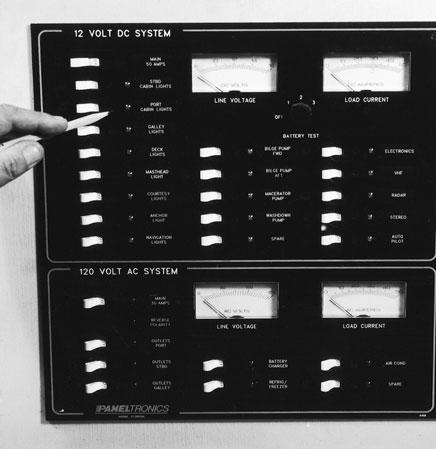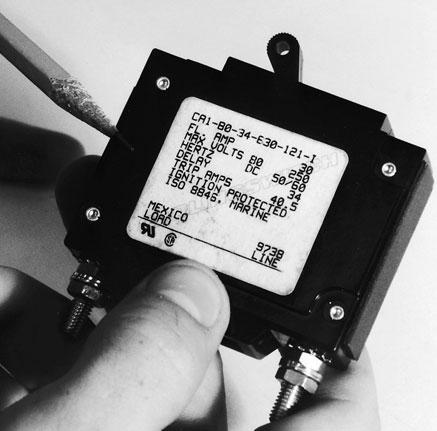
1 minute read
Ignition Protection
slide the breaker out from the back. Figure 4-11 shows the screws on the face of the panel holding the breaker in place, and figure 4-12 shows the breaker, with the specification label showing the unit’s ratings, removed.
Electrical ignition-protection regulations for gasoline-powered recreational watercraft go beyond the ABYC’s voluntary standards and are enforced by the United States Coast Guard. ABYC section E-11 defines ignition protection in these official words: “Ignition Protection—The design and construction of a device such that under design operating conditions
Advertisement
it will not ignite a flammable hydrocarbon mixture surrounding the device when an ignition source causes an internal explosion, or
it is incapable of releasing sufficient electrical or thermal energy to ignite a hydrocarbon mixture, or
the source of ignition is hermetically sealed.”
What this means to me and you is that on gasoline-powered craft we can’t have electrical stuff below decks that will ignite fuel fumes and blow up our boats. To this end, two important classifications need to be considered: the Society of Automotive Engineers (SAE) designation J 1171 and the Underwriters Laboratory (UL) designation UL 1500. These specifications state that the equipment to which they apply has been tested and approved for operation in explosive atmospheres. Approved equipment will have the fact that it meets the ignition-protection standards written right on the specification plate. Ignition-protected circuit breakers will have the statement “ign. protected” on the case. Figure 4-13 shows this labeling on the back of a circuit breaker. Make sure the components you use meet these standards.
These ignition-protection regulations apply to all areas below decks except for accommodation spaces and well-ventilated areas specified in section A-1.6
Fig. 4-11. Screws mounting a circuit breaker in place on a typical panelboard. Turn counterclockwise to remove. Also, make sure the main switch to the panel is turned off before moving breakers out of place.
Fig. 4-12. Circuit breaker removed, showing paper label. After a few years, you can count on these labels being unreadable and even coming unglued and disappearing altogether.





